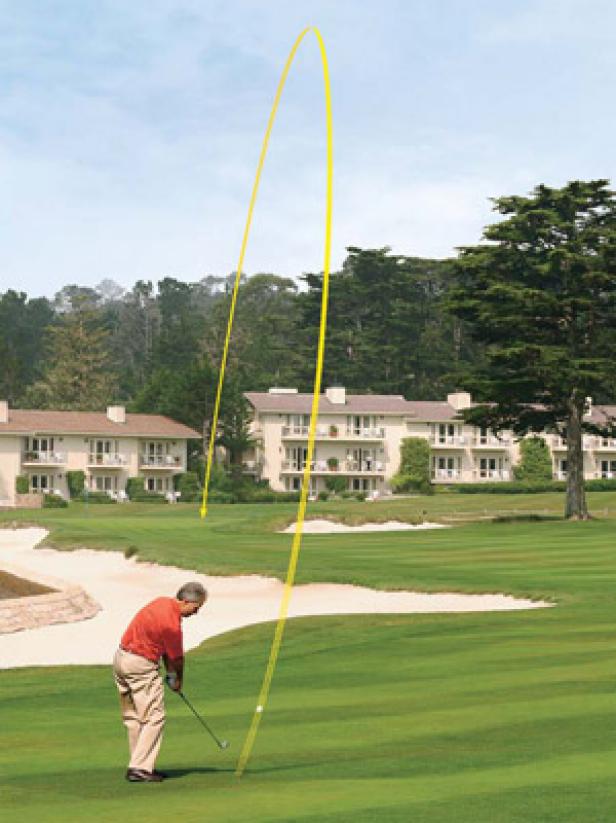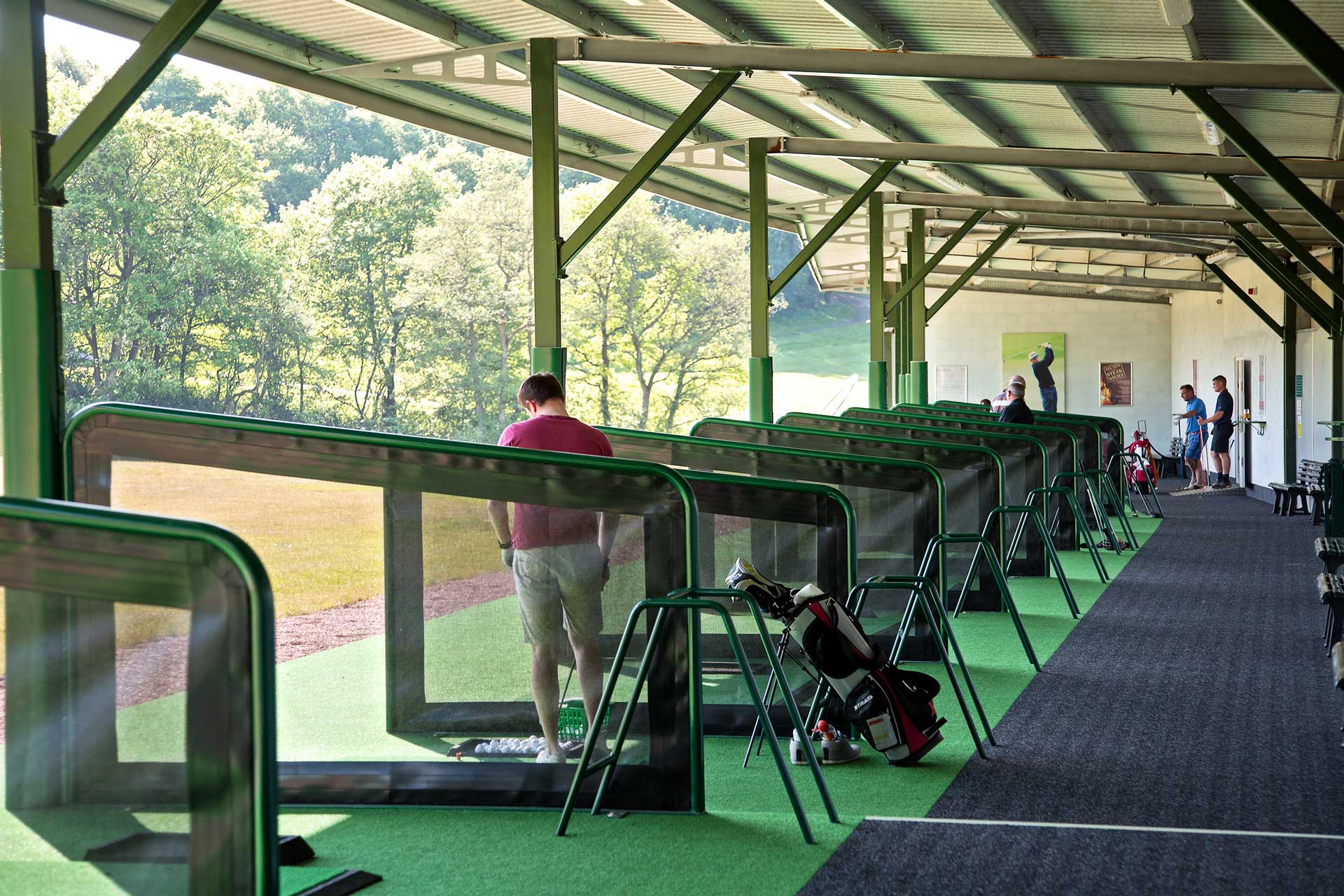
There are many ways to improve your golf swing. Fixing a closed golf clubface, fixing an in-to out swing, and fixing a chicken-wing are some of the corrections you can make. An address that is too in is another problem. This issue can be solved by first learning the correct sequence.
A closed clubface
A closed clubface occurs when the face of a club is closed during a shot. This will limit the ball's initial direction, and cause it to begin in the wrong direction. Closed clubfaces will also reduce loft which will affect the ball’s height during flight. This is one of the most common golfing mistakes.
There are several ways to break the seal of closed clubfaces. The most efficient way is to adjust the grip before you strike the ball. By setting the clubface before the grip, you'll keep your shoulders and arms in a neutral position.

Correcting a chicken wing
Many golfers make the mistake of 'chicken winging' their golf swing. If this happens, your lead arm is not able to find its natural course and it can result in poor ball flow. Fortunately, you can correct a chicken wing in your golf swing with a few simple drills. Your arms should be down. Also, lift your front forearm parallel with the ground while keeping your elbow at your sides.
A chicken wings is caused when the clubhead is lifted too high during a downswing. A chicken wing is when the club head is lifted too high during the downswing, which causes a deep dive. A chicken wing can be corrected by moving your arms slightly.
Correction of an in-to-out swing
Too many in-too swings can be detrimental to the game of golf. This type of swing can be equally devastating as an exaggerated slice. There are simple steps that you can take to fix the problem. Start with the most significant draws on the range.
One of the most important steps to correcting an inside-to-out golf swing is to fix your alignment. Your body should align with your target. Your clubface should be pointed towards the target. Closed arms can encourage a swing path that is too in-toward.

Correcting a shanking, golf swing
If you're a golfer suffering from a shanking golf swing, there are a few things you can do to fix it. A shanking golf swing is caused by your body not aligning correctly with the ball, which leads to a poor trajectory. One simple way to correct a shanking golf swing is to make sure you address the ball with your club head not too far off the toe. This will prevent a shank, which can be one of the most serious golfing mistakes.
First, identify which shank type you have. If you're a hip-spinner, your shank will be inside. This is due to your body spinning too far back during the backswing. Your club will then come into plane line less shallowly. This swing will cause your club's heel or toes to travel across the line. A shanking golf swing may also occur due to indecision or fear.
FAQ
Is golfing dangerous?
Golf is not considered to be dangerous but it can cause injury. You might break your arm swinging a golf club.
However, most injuries can be caused by falling from your golf trolley.
What are the different types?
There are many types of golf courses. Some are for beginners and others for experienced players.
Some golf courses are close to lakes, rivers, mountains and forests. Others are found in urban areas. There are many golf courses, from public parks to private estates.
How often should you play golf?
It all depends on your time. Most recommend two practice sessions per week.
If you are serious about becoming an expert golfer, you should aim to play four times per week.
How do I learn to play golf?
Learning to play golf takes time and practice. You can improve your game by practicing. Here are some tips:
-
Keep practicing. Golf requires constant concentration and attention. Practice is the best way to improve your game.
-
Play with others who are skilled at playing. Playing with people can help you create your own style.
-
Read about golf before you begin practicing. This will help you to understand what you should be working on.
-
You don't have to be able to do everything at once. Start by focusing on one aspect of your game. One example is to work on your putting and chipping skills. Once you feel confident in this area, move on to another part of your game.
-
Take lessons. Lessons can teach you important things like stance, swing speed, posture, etc.
-
Try new techniques. Experiment with new grips and stances.
-
Keep records. Keep track and log your scores. You will be able to identify your areas of improvement.
-
Join a local golf club. Many clubs offer lessons at no cost. These clubs often have friendly members who will be happy to teach newcomers.
-
Hire a coach. You can get guidance from a professional coach on certain areas of your game.
How can a player score points while playing golf?
Points are awarded based how well a golfer performs in a competition. In golf, points can be earned in many different ways. For example, a player could win a tournament outright by scoring more than anyone else. Another option is for a player to finish second in a tournament, and receive half of the prize money that was won. Additionally, players who finish in the 3rd to 10th positions receive points. These additional points are called'strokes.
Apart from these official competitions there are many other events that award points for the best performers. Sometimes, bonus points may be awarded to players who have performed well at an event in the past.
Where can I find a course to play golf?
Most cities have their own golf courses. These courses can be used to improve your golf swing in peace and tranquility.
Or, you could choose to go to one of the country’s many golf courses if you prefer a more intimate atmosphere.
What's the difference in a driving range and an 18-hole putting green?
A driving range allows players to practice hitting balls from distances of 50 yards to 300 yards. Players can practice their putting skills on putting greens.
Statistics
- They do this by means of assessing and rating courses according to the average good score of a "bogey golfer," a player with a handicap of around 20. (en.wikipedia.org)
- In the United States, women made up 25 percent of golfers in 2021, which was up from 19 percent in 2011, and junior female golfers account for 35 percent or 1.1 million golfers.[50] (en.wikipedia.org)
- Buying a set of Titleist or Taylor-Made irons for nearly $1,000 is simply not necessary and likely a waste of money. (golficity.com)
- Professional golfers typically make between 60% and 70% of greens in regulation. (en.wikipedia.org)
External Links
How To
How to Get the Perfect Bunker Shot
A bunker shot refers to a type of shot in golf where your ball is directed at a spot on the green (the hole), and you aim for that spot so it doesn't bounce off the surface. This is achieved by taking advantage the green's slope. This is done to ensure that the ball travels as straight as possible towards the hole.
Golf is all about finding the best line to get to your goal point. There are many factors to consider, such as distance from target, terrain and whether the ball must bounce off the ground or fly straight. Weather conditions can also be important.
You must understand the physics of bunker shots in order to make them perfect. You must first determine whether you are facing uphill or downward. You will need a drawing club if you are going uphill. You'll need to swing with an fade if you are facing downhill. Next, determine how fast your body needs to move to stop the ball bouncing off of the green. Measure the angle between the ball's head and the direction it is traveling. The final step is to measure the size of your bunker.
Once you've got these things figured out, it's time to start swinging. You should swing hard enough to allow the ball to pass the face of your club head, but slow enough so that it doesn't bounce off the green. Once you've found the right speed and trajectory, you can begin your approach. Slowly approach the ball until you can see the landing area. Before you release the ball, take a final look at it. If everything goes according the plan, you should get a perfect shot at bunker.